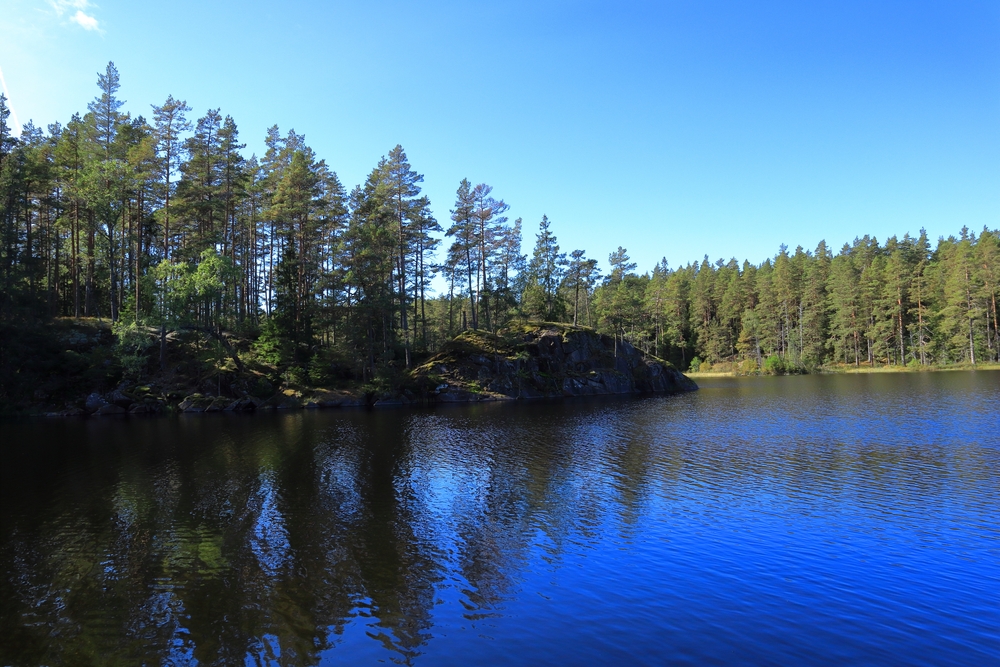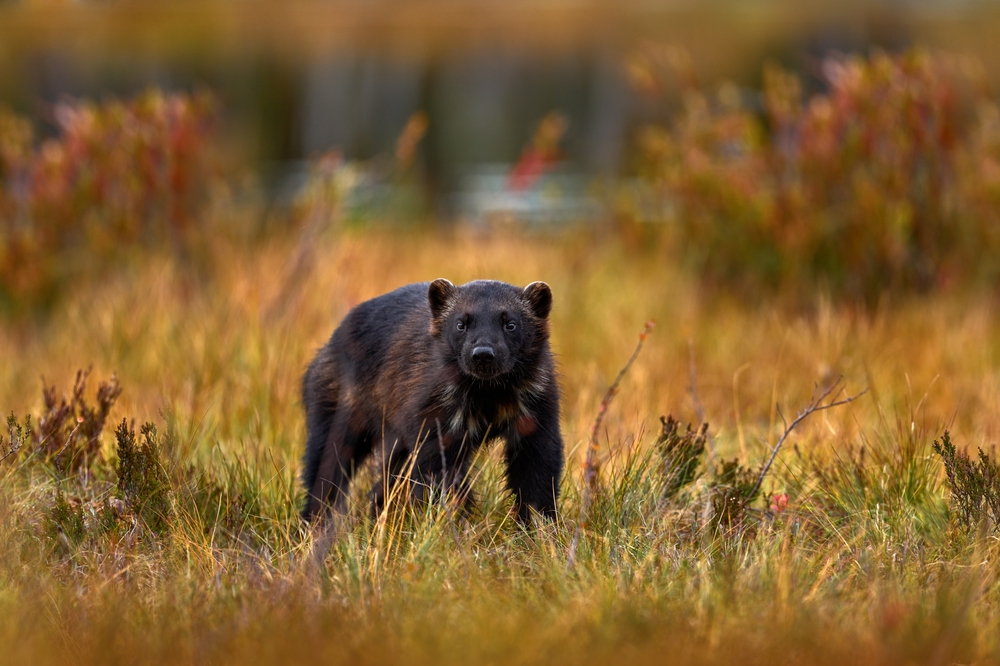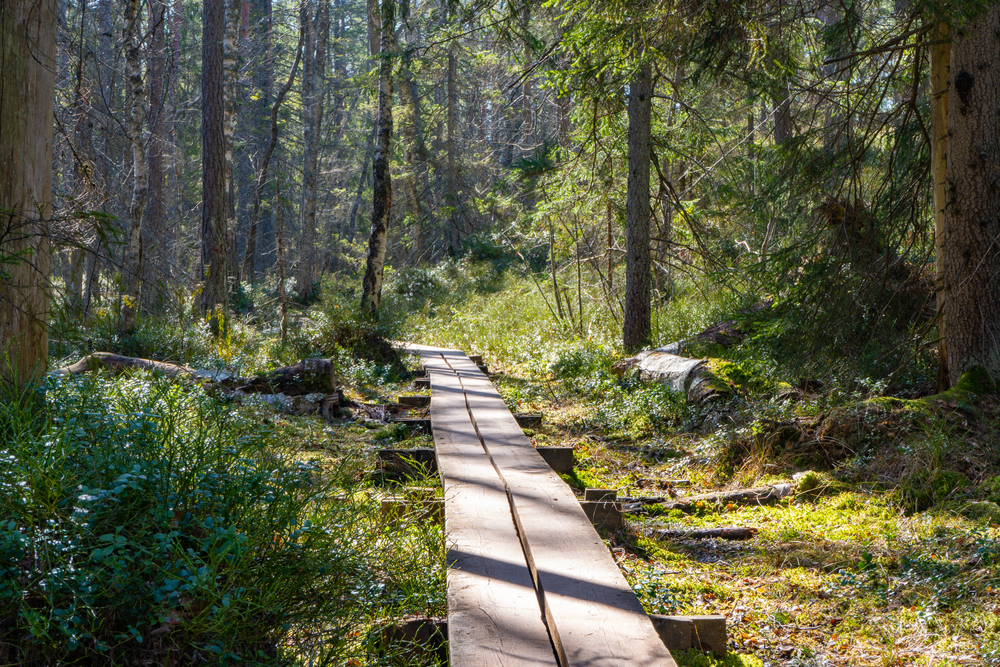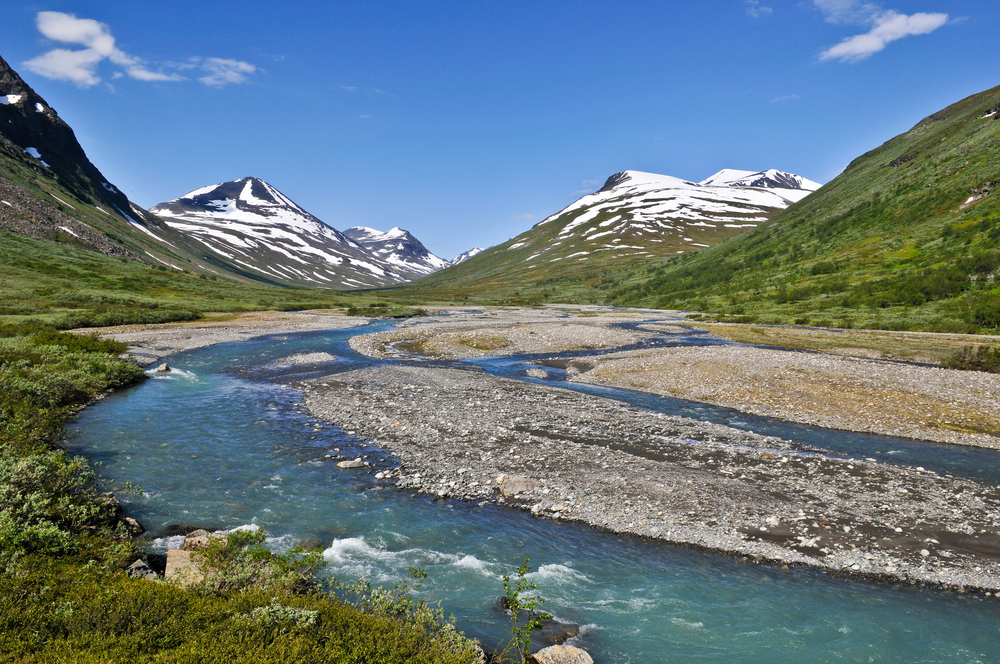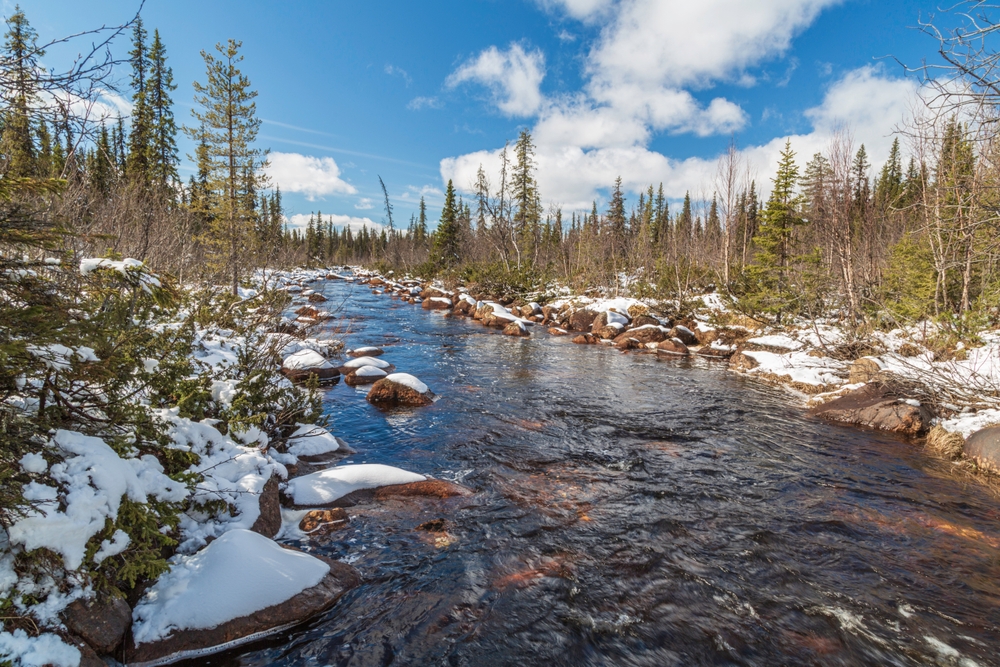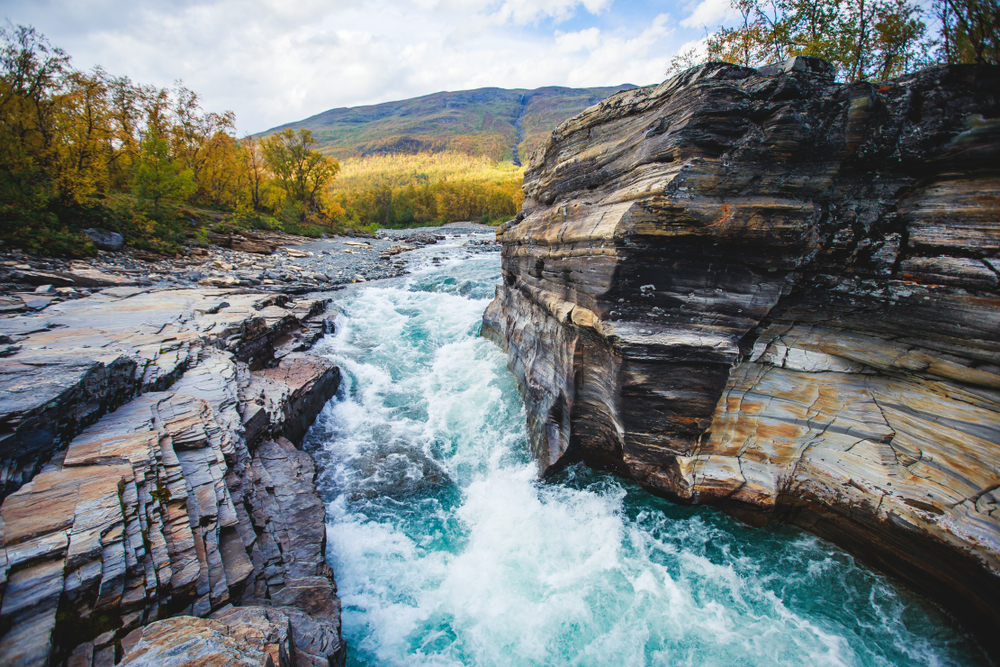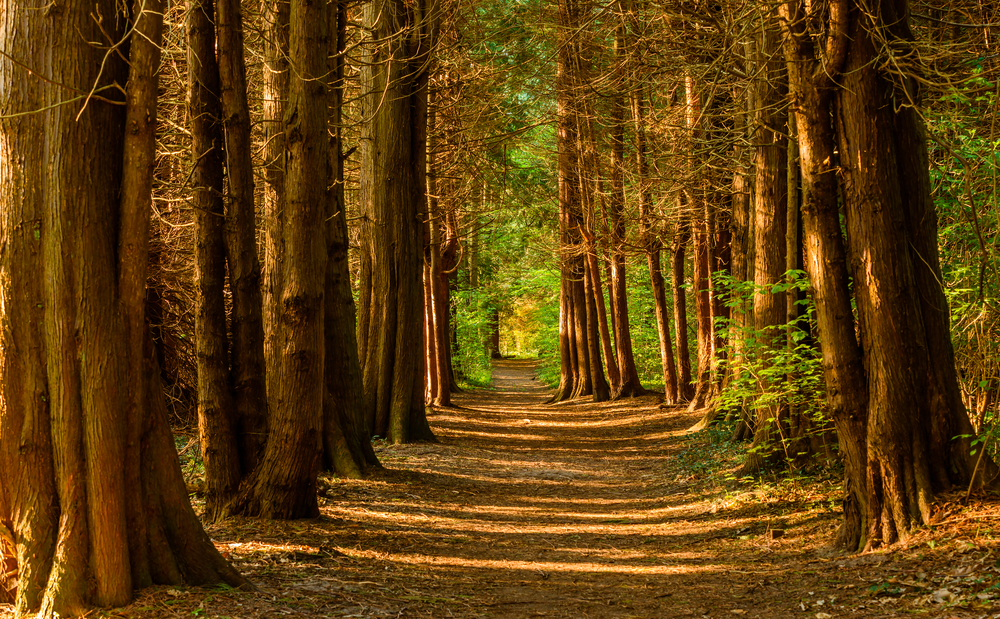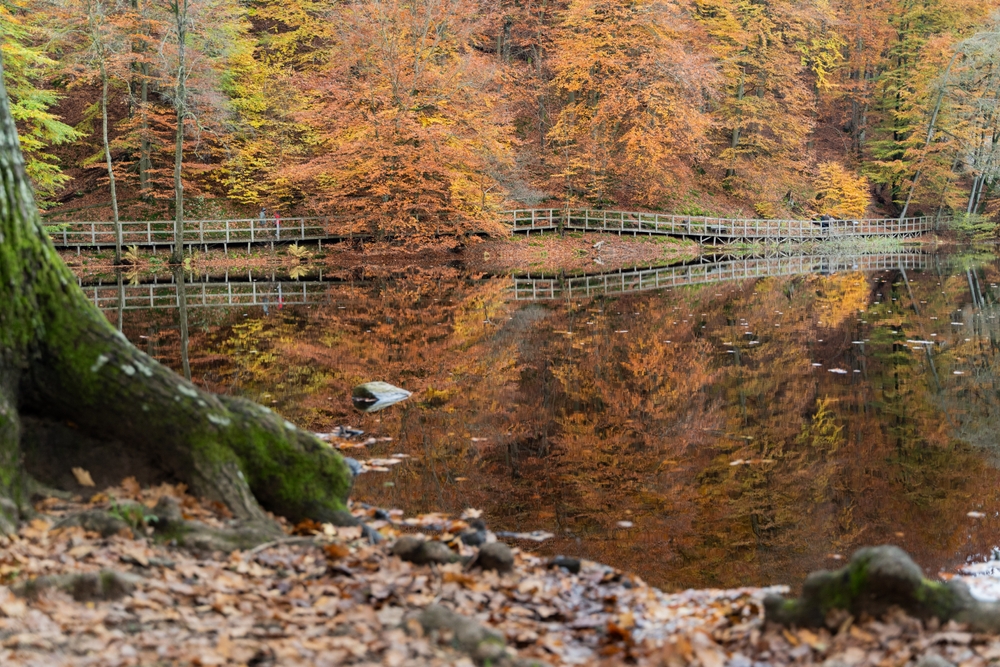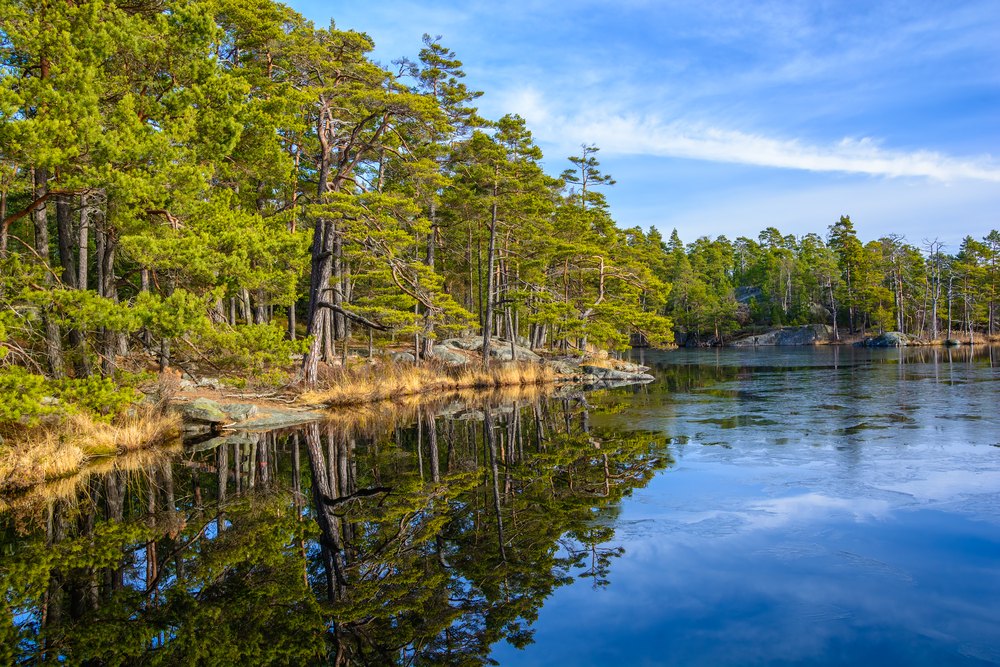Tresticklan Overview
Tresticklan National Park, known locally as Tresticklans Nationalpark, is located in western Sweden, near the border with Norway, in Västra Götaland County.
Covering an area of approximately 11.6 square miles (30 square kilometers), the park is one of Sweden’s most pristine and untouched wilderness areas. It is particularly known for its rugged terrain, expansive pine forests, and countless lakes and marshes that define the Scandinavian wilderness.
The park is characterized by elongated ridges formed during the last Ice Age, which create a striking landscape of narrow valleys and rocky outcrops. One of its most notable features is the Tresticklan ridge, which gives the park its name. This untouched terrain, shaped by glacial movements, provides a unique and almost mystical atmosphere, with deep forests, mirror-like lakes, and remote hiking trails that invite exploration.
The park’s vegetation is dominated by vast boreal forests, primarily composed of Scots pine, Norway spruce, and birch, while the undergrowth is rich with mosses, lichens, and blueberries. In the wetter areas, bogs and marshes provide a different ecosystem, home to unique plant species adapted to the damp conditions.
The combination of rocky landscapes and lush greenery creates a habitat that is both diverse and visually stunning, offering visitors a true immersion into Sweden’s wild nature. The forest floor is often covered in a thick layer of moss, giving the park an almost primeval feel, and fallen trees and decaying wood support a rich array of fungi and insects.
Tresticklan National Park is home to a variety of wildlife, though the elusive nature of many species makes sightings a rare and special experience. Large mammals such as moose roam the park, often seen grazing in the open areas or near water sources.
Roe deer are also present, moving gracefully through the forest. Lynx, one of Sweden’s most secretive predators, inhabit the park but are rarely seen due to their nocturnal habits and cautious nature. Smaller mammals such as red foxes, badgers, and hares are more commonly encountered.
Birdwatchers will find the park particularly rewarding, as it hosts species such as the black woodpecker, common crane, and Eurasian eagle-owl. During migration seasons, the lakes and marshes attract a variety of waterfowl, making the park a great spot for birdwatching. In addition, the rich insect population supports an array of songbirds, whose calls echo through the dense forests.
One of the park’s main attractions is its extensive network of hiking trails, with the most well-known being the Tresticklan Trail. This trail offers hikers a chance to experience the park’s stunning ridges, serene lakes, and deep forests. The park’s lack of roads enhances its remote and untouched feel, making it an ideal destination for those seeking solitude in nature.
Camping is allowed in designated areas, allowing visitors to fully immerse themselves in the wilderness. The park is also popular among canoeists, as its numerous lakes and waterways provide excellent paddling opportunities. Winter brings a different experience, with cross-country skiing and snowshoeing offering a unique way to explore the snow-covered landscapes.
Tresticklan National Park faces conservation challenges, primarily related to climate change and human impact. While the park remains relatively undisturbed, changing weather patterns can affect the delicate balance of its ecosystems, influencing water levels and forest health.
The park management focuses on preserving its untouched nature by limiting infrastructure and encouraging sustainable tourism. Conservation efforts have been successful in maintaining the park’s wilderness, ensuring that it remains a refuge for wildlife and a pristine area for future generations.











































































